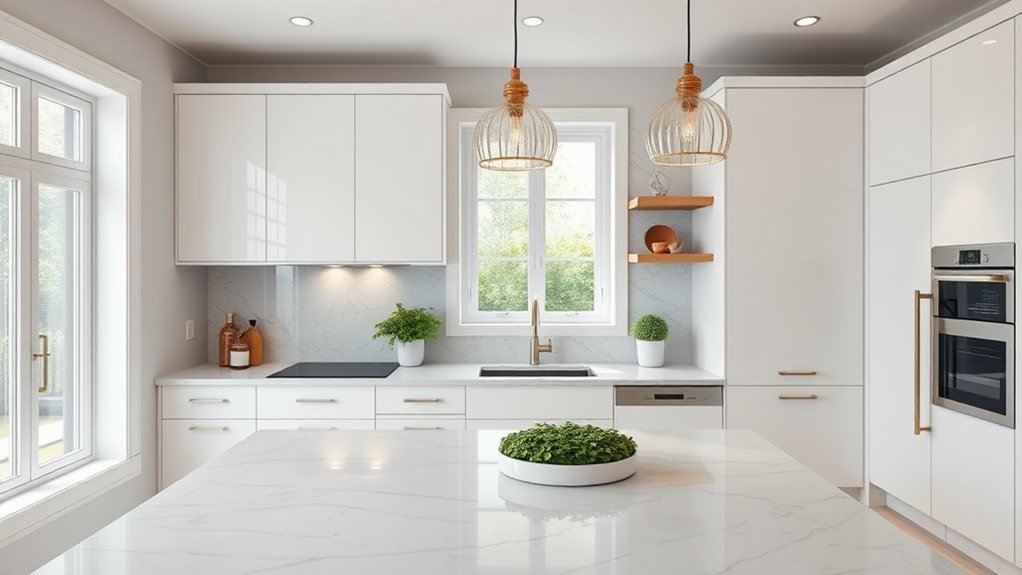Transforming Your Kitchen With White Cabinet Design Ideas
Did you know that the color white can actually make a small kitchen feel more spacious and airy? If you’re looking to transform your kitchen, white cabinet design ideas can be a game changer. From selecting the right cabinet style to finding the perfect complementary colors, there are numerous factors to take into account that can enhance your space. You’ll want to verify every element works in harmony, but what specific choices can truly make a difference in achieving that bright, inviting atmosphere? Let’s investigate the essential components that will guide your transformation.
Popular White Cabinet Styles
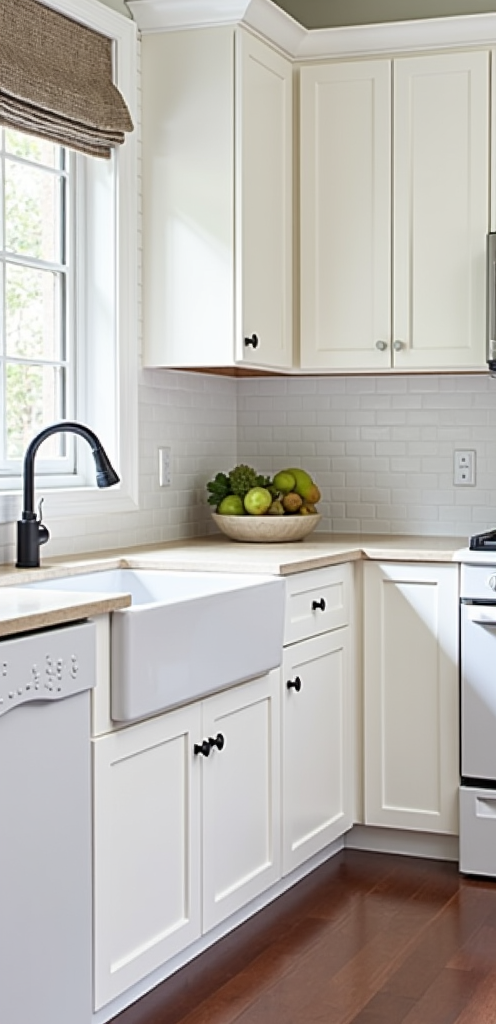
When you think about popular white cabinet styles, it’s hard not to envision the sleek, timeless elegance they bring to a kitchen.
One popular style is the Shaker cabinet. Known for its simple, clean lines, this design emphasizes functionality.
Then, there’s the raised panel cabinet, which adds depth and character to your space with its three-dimensional look.
Flat-panel cabinets, often called Euro-style, provide a minimalist and modern aesthetic that’s perfect for contemporary kitchens.
If you’re aiming for a cottage-inspired feel, consider beadboard cabinets, with their grooved panels that evoke charm.
Each style has its unique appeal, so think about your kitchen’s overall vibe when choosing your cabinets.
This decision will shape your kitchen’s atmosphere for years to come.
Choosing the Right Materials
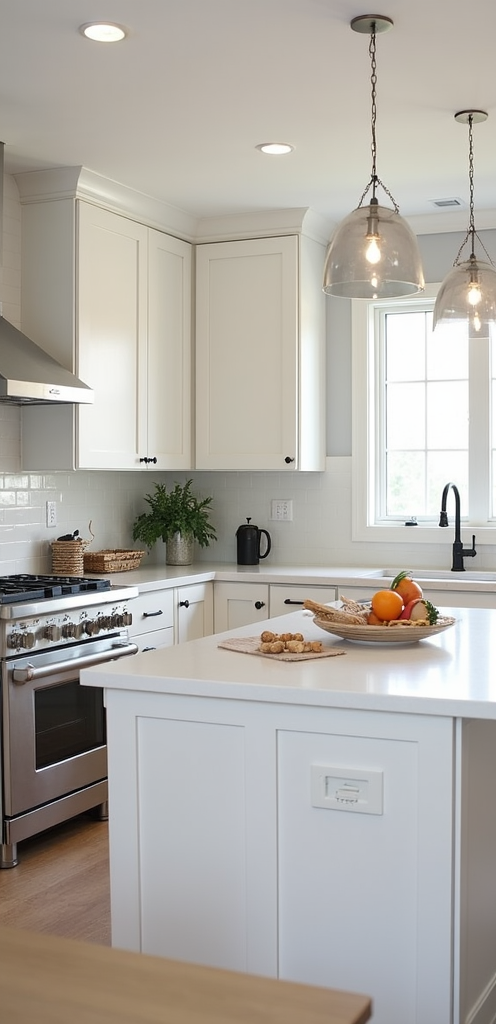
Often, the materials you choose for your kitchen cabinets play an essential role in both aesthetics and durability.
For a classic look, consider solid wood options like oak or maple. They’re strong, but can be pricey. If you want something more budget-friendly, plywood is a good choice, offering a nice balance of strength and cost.
For a sleek, modern feel, you might look into MDF (medium-density fiberboard). It’s smooth and easy to paint, but be aware it’s less durable against moisture.
If you prefer a low-maintenance surface, laminate could work well. It mimics the look of real wood, minus the upkeep.
Whatever you choose, verify it fits your style and the kitchen’s overall function.
Hardware Selection Tips
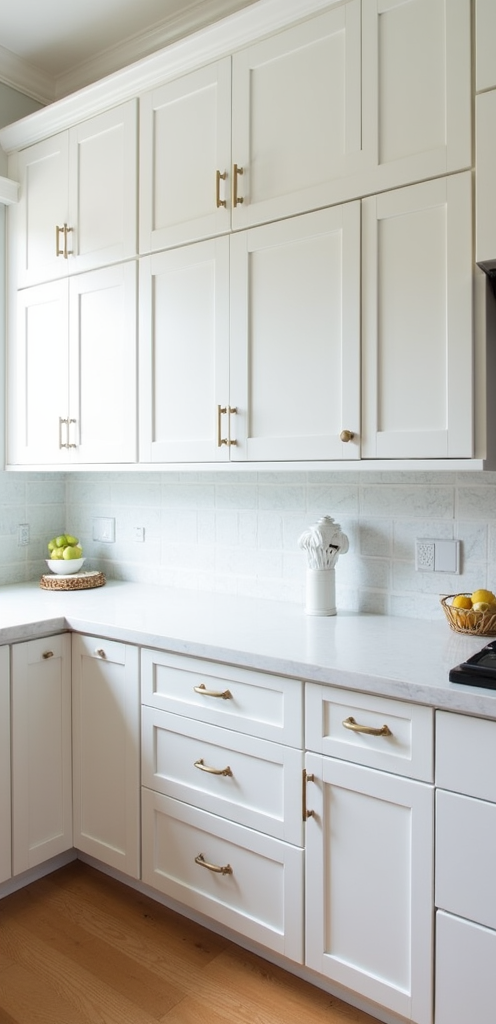
Choosing the right hardware can dramatically improve your kitchen cabinet’s overall look and functionality.
Start by considering the style of your cabinets. For modern designs, sleek stainless steel or matte black knobs can offer a clean appearance. If your cabinets lean toward a more traditional style, opt for antique brass or oil-rubbed bronze for a classic touch.
Next, pay attention to size. Hardware that’s too small will get lost, while oversized pieces may overwhelm your cabinets. Aim for a scale that complements your cabinets’ dimensions.
Also, consider functionality; choose pulls that are easy to grip and operate smoothly.
Finally, coordinate finishes throughout your kitchen to maintain a cohesive look. With these tips, your cabinet hardware can improve both beauty and usability.
Complementary Color Palettes
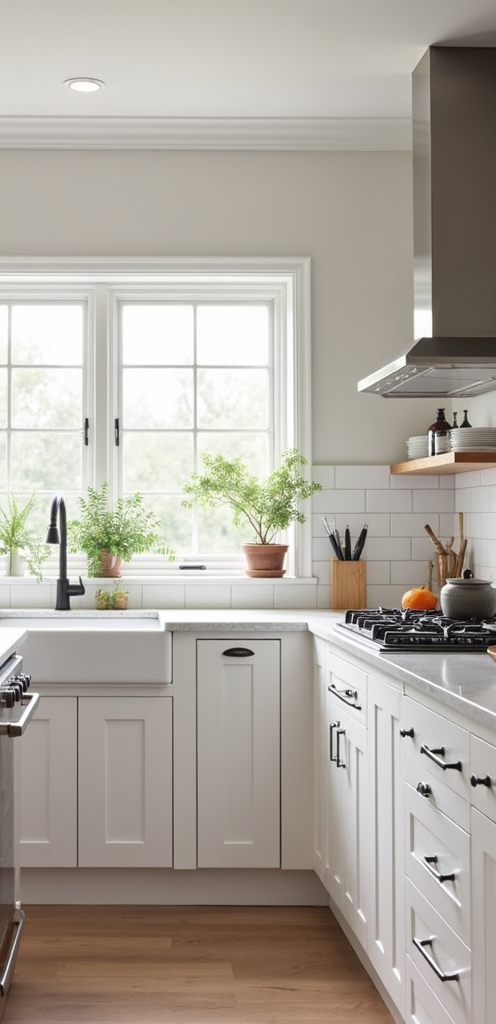
Selecting complementary color palettes for your kitchen cabinets can transform your space into a cohesive and inviting area.
Start by considering the overall theme you want. If your cabinets are white, you could pair them with darker shades like navy blue or charcoal for striking contrast.
Alternatively,
Lighting for Bright Kitchens
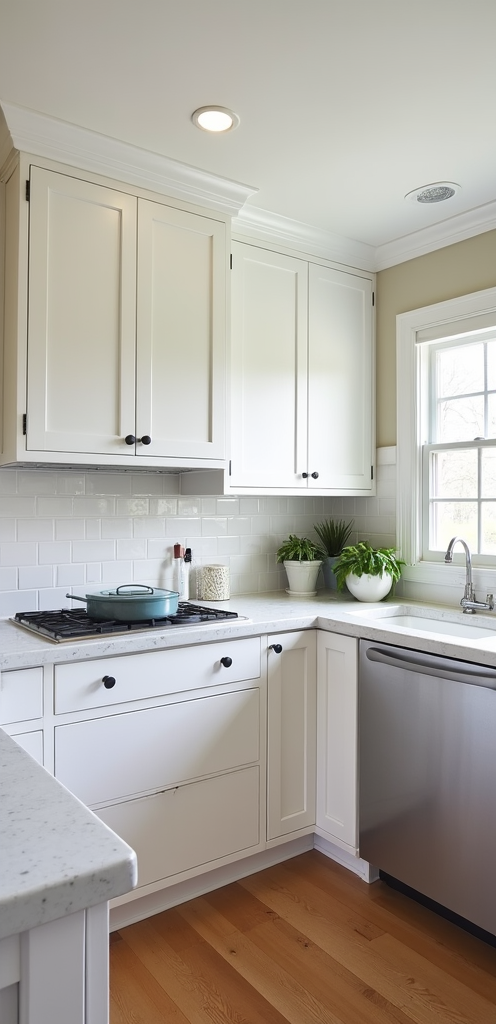
The right lighting can improve your kitchen’s design, especially when you’ve chosen a complementary color palette for your cabinets.
Start with bright overhead lighting. Options like LED troffer lights or stylish pendant fixtures can illuminate your space effectively. Use dimmers to adjust the brightness, making it flexible for different occasions.
Under-cabinet lights are also practical; they add focused light where you need it most, like on countertops. Consider task lighting over prep areas and accent lights to highlight design features.
Natural light is powerful too, so keep windows unobstructed.
Finally, don’t forget about color temperature; warm lights can create a cozy vibe, while cooler lights might feel more modern. Choose the right balance for your ideal kitchen atmosphere.
Functional Layout Considerations
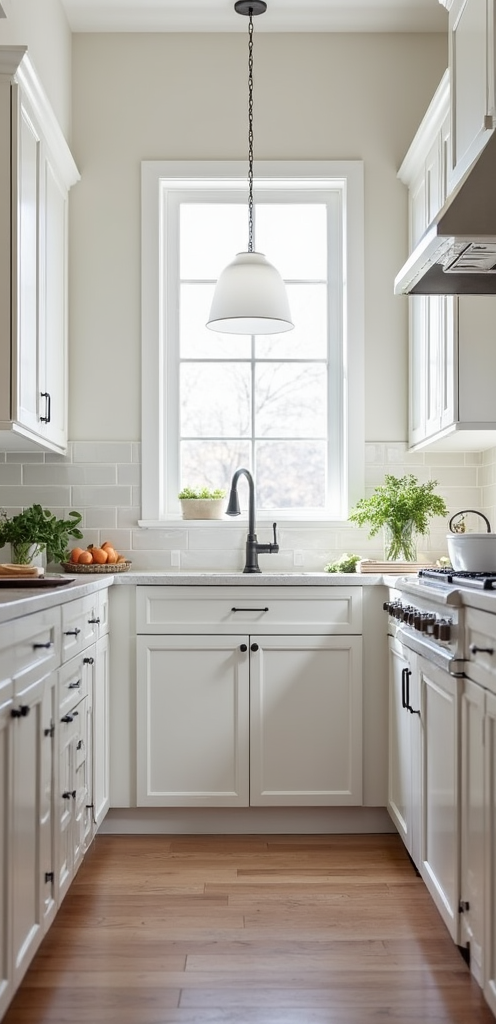
When designing your kitchen, it’s essential to prioritize a functional layout that boosts efficiency and flow.
Start by considering the “work triangle,” which connects your stove, sink, and refrigerator. Keep these three areas within easy reach to streamline cooking tasks.
Next, think about storage; make certain your cabinets are arranged to minimize movement. Place frequently-used items in accessible locations for convenience.
Also, guarantee sufficient counter space for food preparation; this will help you avoid clutter. If your kitchen allows, incorporate an island for extra workspace and seating.
Finally, consider traffic patterns. Leave clear pathways to prevent congestion and maintain safety.
A thoughtful layout not only improves functionality but also creates a more enjoyable cooking environment.
Maintenance and Care Guidelines
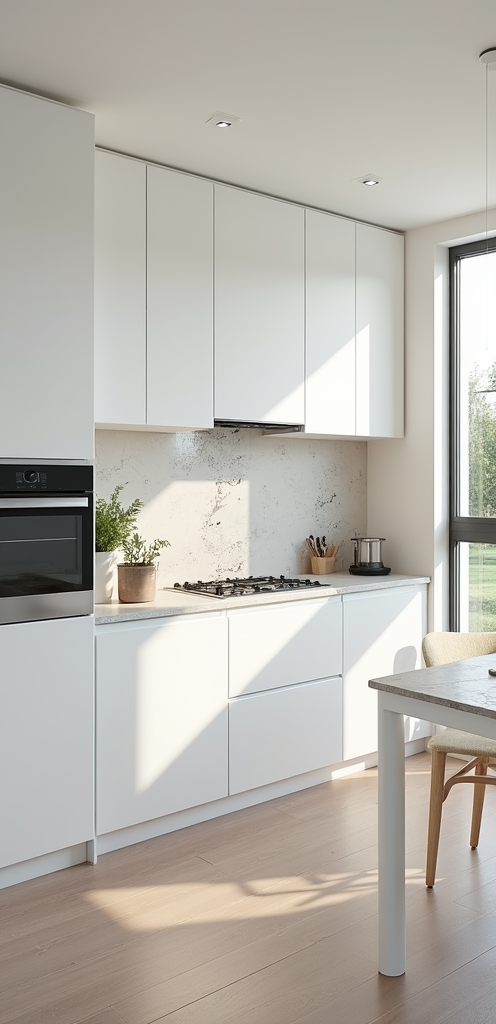
Regularly maintaining your kitchen cabinets is essential for ensuring their longevity and appearance. Start by wiping them down with a soft cloth and a mild soap solution every week. Avoid harsh chemicals that can damage the finish.
If you encounter stubborn stains, try a mixture of baking soda and water for gentle scrubbing. Dusting the surfaces monthly will prevent grime build-up.
Check the hinges and handles regularly for looseness. Tighten screws as needed to keep them secure.
For a polished look, consider applying a furniture polish or wax every few months. This adds a protective layer and improves the finish.
Finally, keep the cabinet area dry to prevent moisture damage, which can lead to warping or mold.

